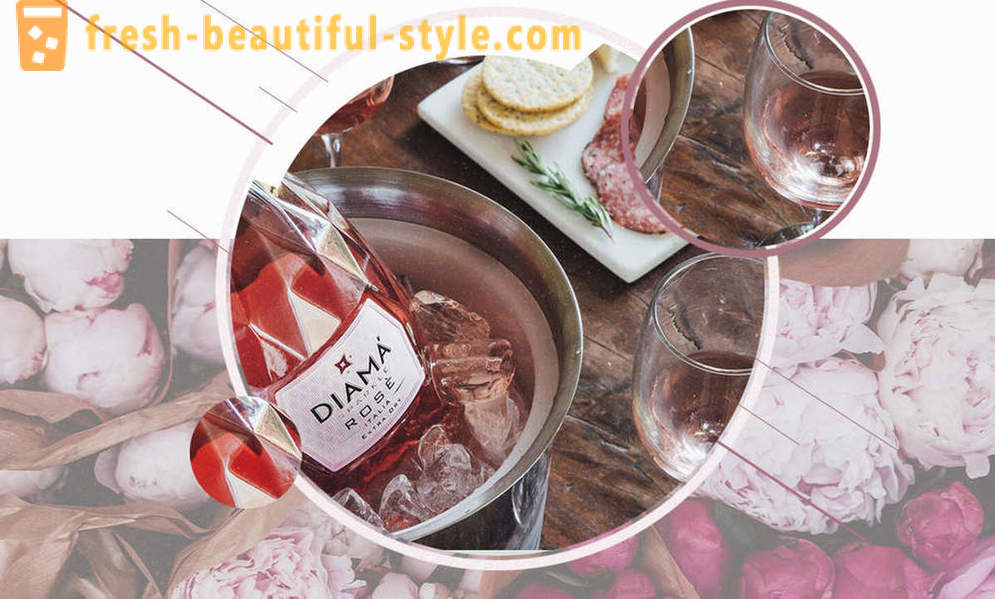Summer in the glass 7 of pink wine facts
Fresh, like you, after a four-week vacation, light as a jump in the pool, gentle as a summer evening - pink wine can rightly be regarded as the main drink of the season. Heroine gathered everything you need to know about the rose. How it is done, what they drink and what they love.
1. Drink rosé - not a new trend

Although the massive popularity of rosé wine obtained through Instagramu and hit Eldzheya and Feduka, this drink is not much more modern conventional red and white wines. In ancient Greece and Rome, the white and red grape varieties are often pressed together. In addition, the rules of the ancient civilization were that undiluted wine drink only barbarians. Decent citizens poured into a drink of water, so the glass most people find wine is pink color.
In the Middle Ages the main judge of the rose were the inhabitants of the south of France. According to one version a big fan of this drink was the French King René of Anjou, who ruled in the 15th century. It was he who started the mass production of wine "color of wild roses" or, as he wrote the French agronomist Olivier de Serres in the 1600s, "the color of eyes of a dying quail."
After another three centuries, the rose was imported into other countries. Now it is produced in many wine regions.
2. This is not a mixture of red and white wine
Rosé wine is not prepared by blending red and white. If anyone does that, then call this drink pink wine can not be true - that may say its color. Exception - champagne. For sparkling wine, such technology is quite acceptable. True Rose is produced from red grapes, leaving the peel berry grape must in a short time, making rose wine and receives an intermediate color between red and white.
3. Color - not the Quality Score

The less time spent grape juice with crushed berries, the wine will be pale. Tint rose can vary from light ruby to nearly transparent.
There is a myth that the lighter rose, so it is higher quality. Probably, it arose because the most popular rosé wines - Provence - usually very delicate in color. But in fact, shade - not the Quality Score, but the grape variety, region and production technology is still important.
4. Rose is not necessarily sweet
Rose Wine, like others, has many additional features: it can be dry, sweet, branded or fortified. In other words, rose taste exists for any person.
5. This versatile wine
The main advantage of a rose - its universality. It can serve as an aperitif, but also goes well with any meal, from appetizers to hot. It is permissible to cool much more than white or red.
For example, a pink Spanish Rioja should do very icy - so it is best reveals her strawberry-raspberry flavor.
Rose is easy to drink in any quantity, it does not interrupt the taste of food and does not lose his own. Pick up the dish, this wine is easy, but still, if you want to keep the whole ceremony, there is a rule: the hotter region of origin, the more expressive taste may be the food. Freshness, simplicity, versatility makes the rose an ideal resort drink. They can be cooled by the pool or enjoy a dinner without risk languish on one glass.

6. Rose no less complex than other wines
Due to the fact that the juice spends with the skin a little time, rosé wine is not always so dense as red. But, despite the versatility, lightness and apparent simplicity, the rose is diverse and gives a lot of original flavors.
It is made from different varieties of grapes, although grenache - the most popular. Changing the retention time of pulp in the mash, you can play with the color saturation. No matter how democratic it is, rosé wine - no less serious and respected drink than its red and white cousins.
7. The best rosé - French
Today rosé made everywhere - from South Africa to Australia, and in each of these countries there is a compelling example of the rose. But the leader in production and standard, as well as in the Middle Ages, is France - every third bottle of rose wine in the world come to Provence.
Among other well-known and beloved pink: Spanish rioja and California White Zinfandel (do not be confused by the name, it is still pink).













































